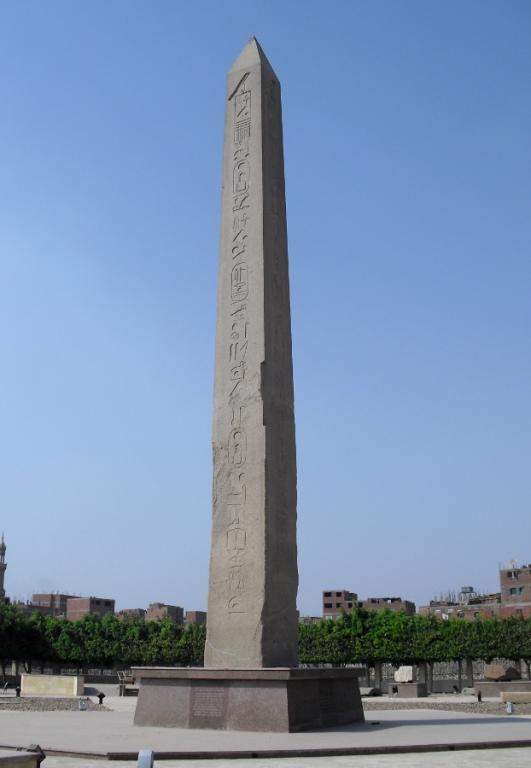
I’ve already written here about the modern Egyptian city of Heliopolis, where Cairo International Airport is located and, consequently, where most international visitors first arrive on Egyptian soil.
Given the name, it’s easy to imagine that modern Heliopolis is identical with the ancient Heliopolis. But it’s not. The ancient city is about ten miles to the north of the modern one.
And ancient Heliopolis is very, very ancient. It was inhabited already in Predynastic times — which is to say by at least 3100 BC, several centuries before the Pyramid Age. It expanded enormously during the Old Kingdom (the time of the pyramids) and the Middle Kingdom, but very little of it remains today as its stones were taken for the construction of the nearby medieval city of Cairo.
The city was the principal location for the worship of the ancient Egyptian gods Ra and Atum. (The most visible surviving relic of ancient Heliopolis is the obelisk of the Temple of Ra-Atum that was erected by Pharaoh Senusret I — aka Sesostris I — who ruled somewhere in the 1900s BC. It still stands in its original location.)
Heliopolis — more accurately rendered in Greek as Hēlioúpolis (Ἡλιούπολις), or “City of the Sun” — derives its name from the fact that the ancient Greeks identified Ra and Atum with their personified and deified form of the sun, Helios. That association with the sun also shows up in the fact that the modern northeastern suburb of Cairo in which the ruins of Heliopolis are located is known in Arabic as Ayn Shams, “The Spring of the Sun.”
But, while the ancient Greeks were ancient, the ancient Egyptians were, in a sense, “ancienter” still. The city’s original name was I͗wnw (“The Pillars”), though it also appears in the Pyramid Texts of the Old Kingdom as the “House of Ra.” (Strictlly, that would have referred only to the temple, but it came to denote the entire city in which the temple sat, which may have been inhabited to a large degree by priests and temple functionaries.) The exact pronunciation of that name is debated, because ancient Egyptian, on the whole, represents only consonants. However, it has commonly appeared in modern scholarship as Iunu and it appears in the Old Testament as Ôn (אן) and Āwen (און)
Some will remember this passage, from Genesis 41:45, 50-52:
And Pharaoh called Joseph’s name Zaphnath-paaneah; and he gave him to wife Asenath the daughter of Poti-pherah priest of On. And Joseph went out over all the land of Egypt. . . . And unto Joseph were born two sons before the years of famine came, which Asenath the daughter of Poti-pherah priest of On bare unto him. And Joseph called the name of the firstborn Manasseh: For God, said he, hath made me forget all my toil, and all my father’s house. And the name of the second called he Ephraim: For God hath caused me to be fruitful in the land of my affliction.
So Joseph’s father-in-law was Potipherah, a priest of On, or of ancient Heliopolis. His name means “He whom Ra has given.”
For many Latter-day Saints, this is a bit of family history.











